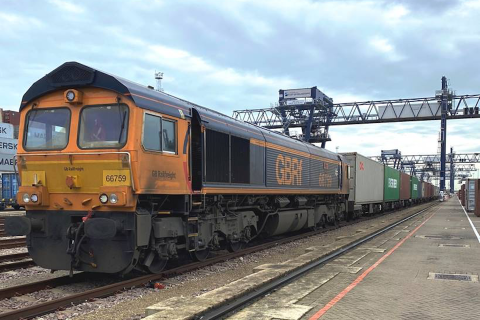Port of Zeebrugge wants to become a rail freight hub

The port of Zeebrugge aims to make rail freight the primary mode for its inland transport operations. The Belgian port has a clear focus: it wants rail to handle 20 per cent of its cargo transport by 2030.
It is all about following the trend of modal shift and the customer demand. Zeebrugge’s position does not allow for many inland shipping connections. As a result, customers are pushing towards the direction of rail and more intermodal solutions. “Rail is the intermodal solution for Zeebrugge to meet the needs of various customers. Our ambition is to turn into a true rail hub,” narrates Johan Abel, chief sales and logistics officer at the port.
More direct rail connections
Rail already occupies around 15 per cent of the port’s cargo transport. However, as Abel explained, Zeebrugge wants more. One way to succeed is to effectively utilise deep-sea and short-sea connections and their linking with direct trains. Steps are already taken in this sense. For instance, in early July, Zeebrugge’s CSP terminal acquired daily connections with Strasbourg in eastern France.
Moreover, during June, Hupac linked Zeebrugge with Brescia in northern Italy with two roundtrips per week and Barcelona in Spain with five roundtrips per week. In September, the company aims to link the Belgian port with Warsaw in Poland. Most probably, this service will offer three weekly roundtrips.
The weekly container train to and from CSP Zeebrugge Terminal and Terminal Container Athus is also restarting. This rail connection launched in late 2019 but was suspended when COVID-19 disrupted global container services. Terminal Container Althus is positioned at the junction of the borders between Belgium, France and Luxemburg, making it an ideal gateway for traffic to and from the Benelux and France. All connections serve a common purpose, enhancing the development of Zeebrugge’s hinterland network.
Investing in non-cranable technologies
Abel underlines that the next crucial step for the Belgian port is to become more active in the field of non-cranabe trailers. Zeebrugge is currently investigating the technologies used to load and unload non-cranable trailers and aims to invest in them more. Specifically, the port wants to offer ready solutions to its customers without forcing them to invest in their fleets.
With more non-cranable containers on trains, Zeebrugge will undoubtedly boost its rail transport volumes while removing cargo from the roads and becoming a new intermodal gateway in Belgium.
Also read:
- Railway plans for Antwerp and Zeebrugge still on the agenda
- Ports of Antwerp and Zeebrugge merge to become Europe’s biggest hub
- More weekly connections between Zeebrugge and Strasbourg
- Hupac outsets wave of intermodal expansion
You just read one of our premium articles free of charge
Want full access? Take advantage of our exclusive offer




